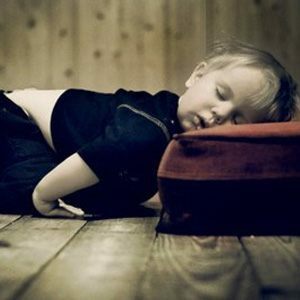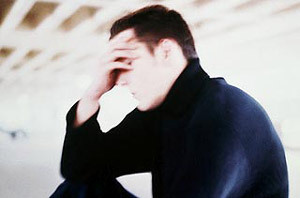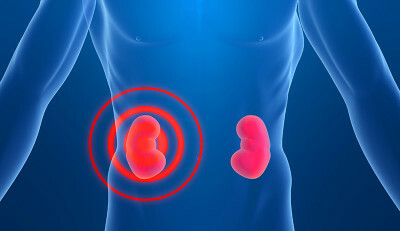 Cerebral is one of the most common effects of organic brain damage after suffering craniocerebral injuries, infections and intoxications.
Cerebral is one of the most common effects of organic brain damage after suffering craniocerebral injuries, infections and intoxications.
This is a serious neurological disorder characterized by a so-called irritable weakness, manifested irritability and a tendency to affective outbreaks amid increased fatigue and exhaustion of mental processes.
Cerebranic syndrome can be diagnosed in children of different ages, and in adults, the symptomatology and its severity will depend on the causes and extent of brain damage, the age of the patient, and the compensatory capacities of the body.
Contents
-
- Contents
-
- Postdraumatic exhaustion
- Forecast and complications
- Prophylaxis is it possible?
-
- Contents
Understand in terms of
When diagnosed, the doctor may use the term cerebration or cerebrosthenic syndrome. These conditions are almost identical causes and symptoms, both are not a disease as such, but its remote consequence.
The term syndrome is more often used for unclear etiology and pathogenesis. After clarifying the etiology, the word syndrome is not always replaced by the word cerebration, both terms can exist in the name of pathology as equivalent.
Syndrome diagnosis is usually made with a smaller volume of diagnostic studies, but it is sufficient for the purpose of treatment.
Causes of cerebral development
Organic brain damage leading to its exhaustion and cerebral development can be caused by the following external and internal factors:
- craniocerebral trauma, head injuries, concussion, concussion;

- viral, bacterial, fungal neuroinfections of the brain - encephalitis, meningitis;
- common viral and bacterial infections with toxic damage to brain tissue;
- chronic intoxication of the body is exogenous( toxins come from the external environment) and endogenous( toxins are formed due to tissue damage, development of diseases);
- impairment of brain nerve cells due to stroke, hypertension, atherosclerosis;
- anemic, circulatory, histotoxic hypoxia after surgical operations.
Post-traumatic exhaustion
Severity of symptoms of post-traumatic cerebral disease depends on the severity of the traumatic brain injury. After minor injuries in the long-term period, frequent headaches, increased fatigue, and school difficulties in learning.
After severe traumatic conditions, the patient may experience twilight conditions, confusion of speech and thinking, disorientation in time and the environment, increased drowsiness, signs of stunning.
Post-traumatic cerebral trauma is characterized by an asthenic state with pronounced vegetative disorders, excessive emotional excitability, unreasonable anxiety, increased sensitivity to loud sounds and bright light.
More pronounced affective disorders: irritability, aggression, explosiveness. Cognitive impairment most often manifests itself by lowering the level of self-criticism and assessing surrounding circumstances.
Features of the syndrome in children
 In children, cerebrasthenic syndrome causes early residual-organic lesions of the brain during the intrauterine period in pathological pregnancy with toxicoses, fetal hypoxia, Rh-conflict, maternal diseases, the threat of miscarriage, birth trauma, and craniocerebral trauma andinfectious diseases at an early age.
In children, cerebrasthenic syndrome causes early residual-organic lesions of the brain during the intrauterine period in pathological pregnancy with toxicoses, fetal hypoxia, Rh-conflict, maternal diseases, the threat of miscarriage, birth trauma, and craniocerebral trauma andinfectious diseases at an early age.
The degree of its manifestation largely depends on the age at which the damage occurred, than from the pathogenic factor.
Manifestations of neurological disorders decrease with time, but do not increase, as the children's body has high compensatory capabilities. Therefore, in most children, the symptoms of cerebrosthenic syndrome disappear completely as they grow up.
Symptomatology of
disorder Asthenohyperdynamic variant of cerebrosthenia is characterized by fussiness, motor disinhibition and activity, restlessness, nervous excitability, aggression, irritability.
With asthenoadynamicheskom option is dominated by lethargy, apathy, drowsiness, inhibition, inactivity.
General symptoms of cerebral:
- emotional instability, sharp mood swings, increased vulnerability and susceptibility to external influences, tearfulness, touchiness;
- increased fatigue and exhaustion of the nervous system;
- memory impairment and concentration of attention;
- sleep disorders - insomnia or persistent drowsiness;

- headaches, often accompanied by nausea, vomiting, growing with fatigue, sudden movements;
- dizziness, semi-fainting condition with darkening in the eyes and a feeling of severe physical weakness;
- poor transportability in the transport, heat and stuffiness;
- sweating, insufficiency of thermoregulation, fluctuations in body temperature, tachycardia;
- increased sensitivity to auditory, light and olfactory stimuli;
- long-term degradation of performance with intellectual load.
Symptoms of the syndrome in young children:
- motor anxiety;
- causeless crying, crying;
- intermittent sleep;
- delay in the formation of motor functions, speech development.
Symptoms in preschool and school age children:
- in the motor sphere, there are two possible variants: motor disinhibition or vice versa, lethargy and inertia;
- difficulties in adapting to school;
- prolonged preservation of speech defects;
- difficulties in developing the skills of reading, writing, counting;
- poor memorization of educational material;
- intolerance to ride on carousels, swings;
- frequent causeless change of mood, capriciousness, discontent, sadness.
Diagnosis of
The diagnosis is made on the basis of clinical signs and anamnesis.
To determine its exact designate the exact methods of investigation - electroencephalogram( EEG) and magnetic resonance imaging( MRI), which allow to identify imbalance and insufficiency of neurotransmitter and enzyme maintenance of brain activity.
Difficulties in diagnosis arise from too many clinical signs that cause this condition.
Aims and methods of treatment
The neurologist is engaged in the treatment of cerebralgia, it is based on direct stimulation of nervous activity and restoration of the nervous system.
Its goals - the restoration of damaged tissues and cells, stimulation of brain development, elimination of the consequences of its damage. In those cases when brain drain is associated with specific diseases, consultation of the appropriate specialist is required.
 Drug treatment is aimed at improving the metabolism of the nervous tissue( drugs nootropic, improving mental processes and increasing physiological tone, adaptogens, amino acids, B vitamins, biogenic stimulants) and increased cerebral blood flow( Cavinton, Cinnarizin, Nikoshpan).
Drug treatment is aimed at improving the metabolism of the nervous tissue( drugs nootropic, improving mental processes and increasing physiological tone, adaptogens, amino acids, B vitamins, biogenic stimulants) and increased cerebral blood flow( Cavinton, Cinnarizin, Nikoshpan).
Complex biological treatment includes dehydration aimed at reducing cerebrospinal fluid hypertension, vitamin therapy, the use, if necessary, of resorptive and vasodilating agents, vegetotrophic drugs.
An important role in the rehabilitation of children is played by the organization of a special learning process, a sparing regime of the day, a diet with a high content of dairy and plant products, physiotherapy and water procedures.
Forecast and Complications
In most cases, the prognosis for cerebrostasia is favorable, especially in childhood, after adequate therapy and sanatorium treatment its symptoms practically disappear.
However, this neurological disorder in children predisposes to a decline in school performance, the formation of negative character traits, neuroses, such children are more easily amenable to negative influence, more often imitate asocial behavior.
In case of non-compliance with sparing conditions and adverse situational influences, the syndrome can develop into a coarser pathology of the individual.
Prevention - is it possible?
In order to minimize the risk of developing cerebrostenia in young children, the expectant mother should promptly treat  chronic diseases before and during pregnancy, correct endocrine, vascular and other pathologies of pregnancy, seek qualified help in a timely manner if there are signs of toxicosis, rhesus conflict, threatmiscarriage, hypoxia.
chronic diseases before and during pregnancy, correct endocrine, vascular and other pathologies of pregnancy, seek qualified help in a timely manner if there are signs of toxicosis, rhesus conflict, threatmiscarriage, hypoxia.
A thorough diagnosis and correction of neurological disorders, prevention of childhood trauma, timely and competent treatment of infectious diseases, intoxications will help to avoid nervous exhaustion.



